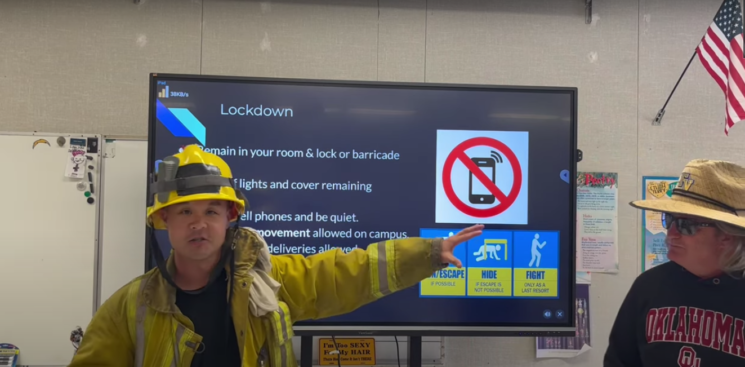
By Natalie Tran
On the first day of school, Fountain Valley High School (FVHS) welcomed its students back into the new school year by using Smart Start, which this year consisted of a series of YouTube videos introducing students to Baron culture, the school campus and staff.
“The idea [of Smart Start] is to give [students] a little bit of everything, like the logistical stuff like parking, textbook help, chromebook help, athletics, clubs and ways to get involved on campus,” Assistant Principal of Curriculum and Instruction Jon Hurst said.
In addition to providing information on campus resources, a main objective of Smart Start is to teach students school safety procedures, such as what to do in an earthquake or lockdown. Smart Start also takes the time to introduce students to Titan HST (Health & Securities Technology Inc.), an app FVHS has used in recent years to communicate with students during emergencies.
“Freshmen need the basics. Some of them aren’t familiar with Titan, [or] don’t know what a shelter in place [is] versus a lockdown,” business teacher Lorena Emerson said. “And so I think all of those things are important… it’s a good reminder.”
This year’s Smart Start was different from last year’s, in that it only took up one day and it used videos rather than last year’s three-day introduction using Google slide presentations. Although presented on different mediums, the Smart Start content remains the same and serves its primary purpose: helping students navigate campus resources and transition into the new school year.
“I would say [having Smart Start be one day this year] was probably more appropriate, given that we’ve already been back for a year so we weren’t in need of the extended acclimation period,” Hurst said.
The Smart Start program was first established in 2016, with the intent of equipping students with the necessary tools and resources to be successful on campus. These skills were more technology-oriented, giving students tutorials on how to use Canvas, access Gmail accounts or use Desmos, an online graphing calculator often used in math or science classes. Knowing how to access such applications paved the way for student success, which was Smart Start’s original goal.
However in recent years, specifically post-pandemic, the purpose of Smart Start shifted to getting students used to being back on campus, or rather for first-time students, how to navigate the FVHS campus.
“When we did it [in 2021], [Smart Start] was to help acclimate students return to campus after not being physically on campus for some time,” Hurst said. “It was intended to give them information that’s going to help them navigate a return to campus and help them get their footing a little bit.”
Whether or not we see Smart Start again in future years remains to be seen. However if we do, Hurst believes that there are improvements to be made to the program.
“We [want] a healthy medium,” Hurst said. “Making it somewhat more consumable, but also making it more collaborative amongst teachers and students.”





